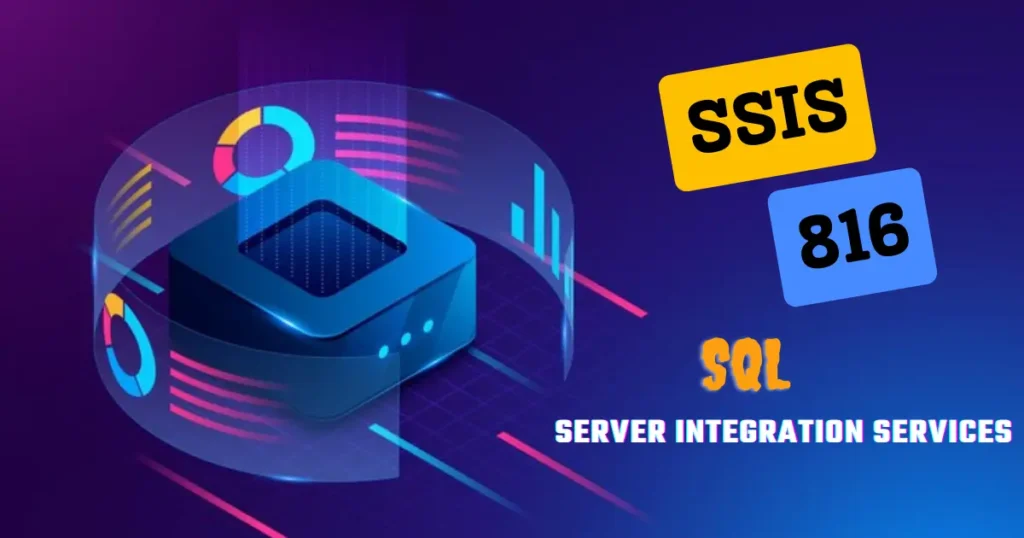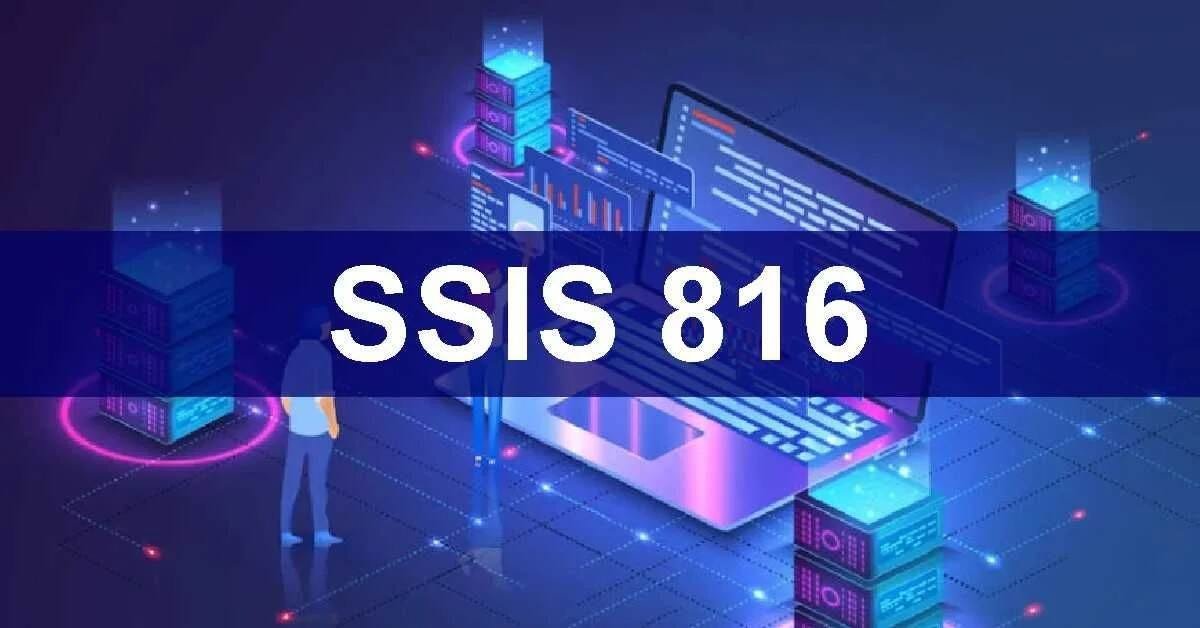Introduction to SSIS 816
SSIS-816 stands for SQL Server Integration Services 816, a sophisticated data integration and transformation tool developed by Microsoft. This tool is crucial for businesses that deal with large volumes of data and need an efficient way to manage, integrate, and transform this data. SSIS-816 facilitates the process of extracting data from various sources, transforming it according to business rules, and loading it into target systems, such as data warehouses or databases. This makes it an indispensable tool for data warehousing, ETL (Extract, Transform, Load) processes, and data migration tasks. Given the complexity and the ever-growing amount of data that organizations handle, tools like SSIS-816 are essential for maintaining data accuracy and consistency, ensuring that businesses can make informed decisions based on reliable data. Moreover, SSIS-816 provides a user-friendly interface that allows data professionals to design and implement robust data integration solutions without extensive coding, making it accessible to a broader range of users.
II. Unpacking SSIS-816 Core Components
The core components of SSIS-816 are designed to offer a comprehensive solution for data integration and workflow automation. These components include the Control Flow, Data Flow, Event Handlers, and Parameters, each serving a specific purpose in the ETL process. The Control Flow is the backbone of any SSIS-816 package, managing the execution flow of tasks and containers. It allows users to define the sequence in which tasks are executed and includes various tasks like data preparation, data cleansing, and data loading. The Data Flow component is where the magic happens; it handles the extraction of data from sources, the transformation of this data (such as data type conversion, sorting, and filtering), and the loading of the transformed data into destination systems. This component supports a wide range of data sources and destinations, including relational databases, flat files, and XML files, ensuring seamless data integration. Event Handlers in SSIS-816 provide a mechanism to handle package events, such as errors or task completion, allowing for robust error handling and logging strategies. Parameters, on the other hand, offer flexibility and reusability in SSIS-816 packages by allowing dynamic assignment of values, which can be modified at runtime, making the packages more adaptable to different scenarios and environments.

III. SSIS-816 in Action: Real-World Applications
SSIS-816 is widely used across various industries, demonstrating its versatility and effectiveness in managing data integration tasks. In the finance sector, for instance, SSIS-816 is employed to consolidate data from multiple sources, such as transaction systems, market data feeds, and external financial reports, into a central data warehouse. This consolidated data is then used for generating financial reports, performing risk analysis, and ensuring regulatory compliance. In healthcare, SSIS-816 helps in integrating patient records from different hospital systems, enabling comprehensive patient care management and facilitating research and analysis for better healthcare outcomes. Retail companies use SSIS-816 to combine sales data, inventory levels, and customer feedback from various channels, providing a holistic view of their operations and helping in strategic decision-making. Manufacturing firms leverage SSIS-816 to streamline supply chain management by integrating data from suppliers, production lines, and distribution networks, ensuring efficient production planning and inventory control. These real-world applications highlight how SSIS-816 enables organizations to harness the power of their data, driving efficiency and innovation across different sectors.
IV. Deep Dive into SSIS-816 Features
SSIS-816 boasts a plethora of features that cater to the diverse needs of data professionals. One of its most significant features is the rich set of built-in transformations available in the Data Flow component. These transformations include data cleansing, sorting, merging, aggregating, and pivoting, which help in preparing the data for analysis. The tool also supports complex data flows with conditional splits and lookups, allowing users to implement sophisticated data transformation logic. SSIS-816 provides robust support for error handling and logging, enabling users to track the progress and status of their data integration processes and quickly identify and resolve issues. Another noteworthy feature is the ability to integrate with other Microsoft products, such as SQL Server, Azure Data Factory, and Power BI, creating a cohesive data ecosystem that enhances the overall data management strategy. The tool also supports scripting with C# and VB.NET, giving advanced users the flexibility to customize their data flows and extend the functionality of the tool. Furthermore, SSIS-816 includes features for automating and scheduling ETL processes, reducing manual intervention and ensuring that data is always up-to-date and accurate.
V. The Benefits of Adopting SSIS-816
Adopting SSIS-816 offers numerous benefits to organizations looking to improve their data integration and transformation capabilities. One of the primary advantages is its ability to handle large volumes of data efficiently, ensuring that data integration tasks are performed quickly and accurately. This efficiency translates into faster data availability for decision-making processes, giving organizations a competitive edge. The intuitive, graphical interface of SSIS-816 makes it accessible to a wide range of users, including those with limited programming experience, thereby reducing the learning curve and enabling quicker adoption. The tool’s extensive library of built-in tasks and transformations reduces the need for custom coding, saving development time and effort. Moreover, the robust error handling and logging features enhance the reliability and maintainability of data integration solutions. By integrating seamlessly with other Microsoft products, SSIS-816 provides a cohesive data management ecosystem that supports advanced analytics and business intelligence initiatives. Additionally, the flexibility offered by parameters and scripting capabilities allows organizations to tailor their data integration processes to meet specific business requirements, enhancing the overall agility and responsiveness of their data management strategy.

VI. SSIS-816 vs. Competitors
When compared to other data integration tools, SSIS-816 stands out for several reasons. One of the main differentiators is its deep integration with the Microsoft ecosystem, which provides a seamless experience for users already utilizing Microsoft products like SQL Server, Azure, and Power BI. This integration ensures smooth data flows between different systems, reducing the complexity of managing disparate data sources. Additionally, SSIS-816 offers a comprehensive set of features out-of-the-box, which might require additional plugins or extensions in competing tools. The tool’s user-friendly interface and extensive documentation make it easier for new users to get started and quickly become proficient. Moreover, SSIS-816 is known for its scalability and performance, capable of handling large datasets and complex transformations efficiently. While other tools may offer similar functionalities, SSIS-816‘s combination of ease of use, performance, and integration capabilities makes it a preferred choice for many organizations. However, it is important to evaluate specific business needs and compare features, pricing, and support options before making a decision.
VII. Implementing SSIS-816: Best Practices
Successful implementation of SSIS-816 requires following best practices to ensure optimal performance and maintainability. One of the key best practices is to design modular and reusable packages. Breaking down complex ETL processes into smaller, manageable tasks makes it easier to troubleshoot and maintain the solution. Using configurations and parameters can add flexibility, allowing packages to be reused across different environments with minimal changes. It is also crucial to implement robust error handling and logging mechanisms to monitor the progress of ETL processes and quickly identify and address issues. Regularly testing and validating data flows helps in ensuring data accuracy and consistency. Another best practice is to optimize data flows for performance by minimizing the use of blocking transformations, reducing the number of data transfers, and leveraging parallel processing where possible. Documenting the ETL processes and maintaining version control are also important for long-term maintainability and collaboration among team members. Lastly, investing in training and staying updated with the latest features and updates from Microsoft can help in fully leveraging the capabilities of SSIS-816.
VIII. The Future of SSIS-816
The future of SSIS-816 looks promising, with continuous improvements and updates from Microsoft. As data volumes and complexity continue to grow, tools like SSIS-816 will play an increasingly important role in helping organizations manage and integrate their data. Microsoft is likely to enhance the tool’s capabilities by introducing new features and improving existing ones, ensuring that SSIS-816 remains a leading data integration solution. Integration with cloud-based platforms like Azure is expected to become even more seamless, enabling organizations to leverage the power of cloud computing for their ETL processes. Additionally, advancements in artificial intelligence and machine learning may be incorporated into SSIS-816, providing users with advanced data transformation and analysis capabilities. As organizations continue to adopt data-driven decision-making, the demand for robust and scalable data integration tools like SSIS-816 will only increase. Staying informed about the latest trends and updates in the data integration space will help organizations make the most of SSIS-816 and maintain a competitive edge.
IX. SSIS-816 Community and Resources
The SSIS-816 community is a valuable resource for users looking to enhance their knowledge and skills. Online forums, user groups, and social media platforms provide a space for users to share experiences, ask questions, and offer solutions to common challenges. Microsoft’s official documentation and online courses offer in-depth tutorials and guides, helping users get up to speed with the tool. Additionally, numerous blogs, YouTube channels, and third-party training providers offer tips, tricks, and best practices for using SSIS-816 effectively. Participating in community events, such as webinars and conferences, can provide insights into the latest trends and developments in the data integration space. By leveraging these resources, users can continuously improve their skills and stay updated with the latest features and enhancements in SSIS-816.
X. Addressing SSIS-816 Concerns
While SSIS-816 offers a robust suite of features for data integration, it’s not without its concerns. One common issue is the complexity of the tool, particularly for users who are new to data integration or SQL Server environments. The extensive range of features and components can be overwhelming, but leveraging Microsoft’s documentation, online tutorials, and community forums can help ease this learning curve. Performance is another concern, especially when dealing with very large datasets or complex transformation logic. Users might experience slower processing times or memory issues, but optimizing data flows and using efficient transformation techniques can mitigate these problems. Additionally, some users may have compatibility concerns with non-Microsoft systems or data sources. However, SSIS-816 provides various connectors and customization options to bridge these gaps. Lastly, there are occasional concerns about security, particularly with the handling of sensitive data. Ensuring that best practices are followed for data encryption and access control can address these issues. By staying informed about updates and leveraging available resources, users can effectively manage these concerns and make the most of SSIS-816.
XI. SSIS-816 Success Stories
Many organizations have leveraged SSIS-816 to achieve remarkable success in their data management and integration efforts. For example, a major e-commerce company utilized SSIS-816 to streamline their data integration processes, consolidating customer data from various sales channels into a unified data warehouse. This integration allowed them to gain deeper insights into customer behavior and improve their marketing strategies, leading to increased sales and customer satisfaction. In the healthcare sector, a leading hospital network implemented SSIS-816 to integrate patient data from multiple systems, enabling more accurate and comprehensive patient records. This integration improved patient care coordination and supported data-driven decision-making in clinical practices. Similarly, a financial services firm used SSIS-816 to consolidate financial data from different branches and external sources, enhancing their reporting capabilities and regulatory compliance. These success stories illustrate the effectiveness of SSIS-816 in addressing diverse data integration challenges and delivering significant benefits to organizations across various industries.
XII. Conclusion: Is SSIS-816 Right for You?
In conclusion, SSIS-816 offers a powerful and versatile solution for data integration and transformation needs. Its comprehensive set of features, ease of use, and deep integration with Microsoft products make it an excellent choice for many organizations. Whether you’re dealing with large volumes of data, complex transformation requirements, or the need for seamless integration with other systems, SSIS-816 provides the tools and capabilities to address these challenges effectively. However, it’s important to evaluate your specific requirements, existing infrastructure, and long-term goals to determine if SSIS-816 is the right fit for your organization. By considering factors such as performance, ease of implementation, and compatibility with other systems, you can make an informed decision and leverage SSIS-816 to enhance your data management strategy.
FAQ
1. What is SSIS-816?
SSIS-816 refers to SQL Server Integration Services 816, a Microsoft tool designed for data integration and transformation, facilitating ETL (Extract, Transform, Load) processes.
2. How does SSIS-816 compare to other data integration tools?
SSIS-816 stands out due to its deep integration with Microsoft products, a wide range of built-in features, and a user-friendly interface, making it a strong choice for users within the Microsoft ecosystem.
3. Can SSIS-816 handle large datasets?
Yes, SSIS-816 is capable of handling large datasets efficiently, with performance optimization features to manage complex data transformations and integrations.
4. What are the core components of SSIS-816?
The core components of SSIS-816 include Control Flow, Data Flow, Event Handlers, and Parameters, each playing a crucial role in the data integration and transformation process.
5. How can I get started with SSIS-816?
To get started with SSIS-816, you can access Microsoft’s official documentation, online tutorials, and community resources. Building simple ETL packages and gradually exploring advanced features will help you become proficient.
6. What are some best practices for using SSIS-816?
Best practices for using SSIS-816 include designing modular packages, implementing robust error handling, optimizing data flows for performance, and staying updated with the latest features and updates.
7. What are the common concerns with SSIS-816?
Common concerns with SSIS-816 include its complexity, potential performance issues with large datasets, and compatibility with non-Microsoft systems. These can be addressed through training, optimization, and using available connectors.
8. What is ssis.816?
ssis.816 is another way to refer to SSIS-816, highlighting the version of SQL Server Integration Services focused on data integration and transformation.
9. What does SSIS 816 JAV refer to?
SSIS 816 JAV might be a variant or a specific implementation related to SSIS-816, possibly involving Java or other integrations.
10. What is the significance of SSIS-816 Uncensored Leak?
SSIS-816 Uncensored Leak may refer to unauthorized information or discussions related to SSIS-816 features or vulnerabilities. It’s important to rely on official sources for accurate and secure information.
